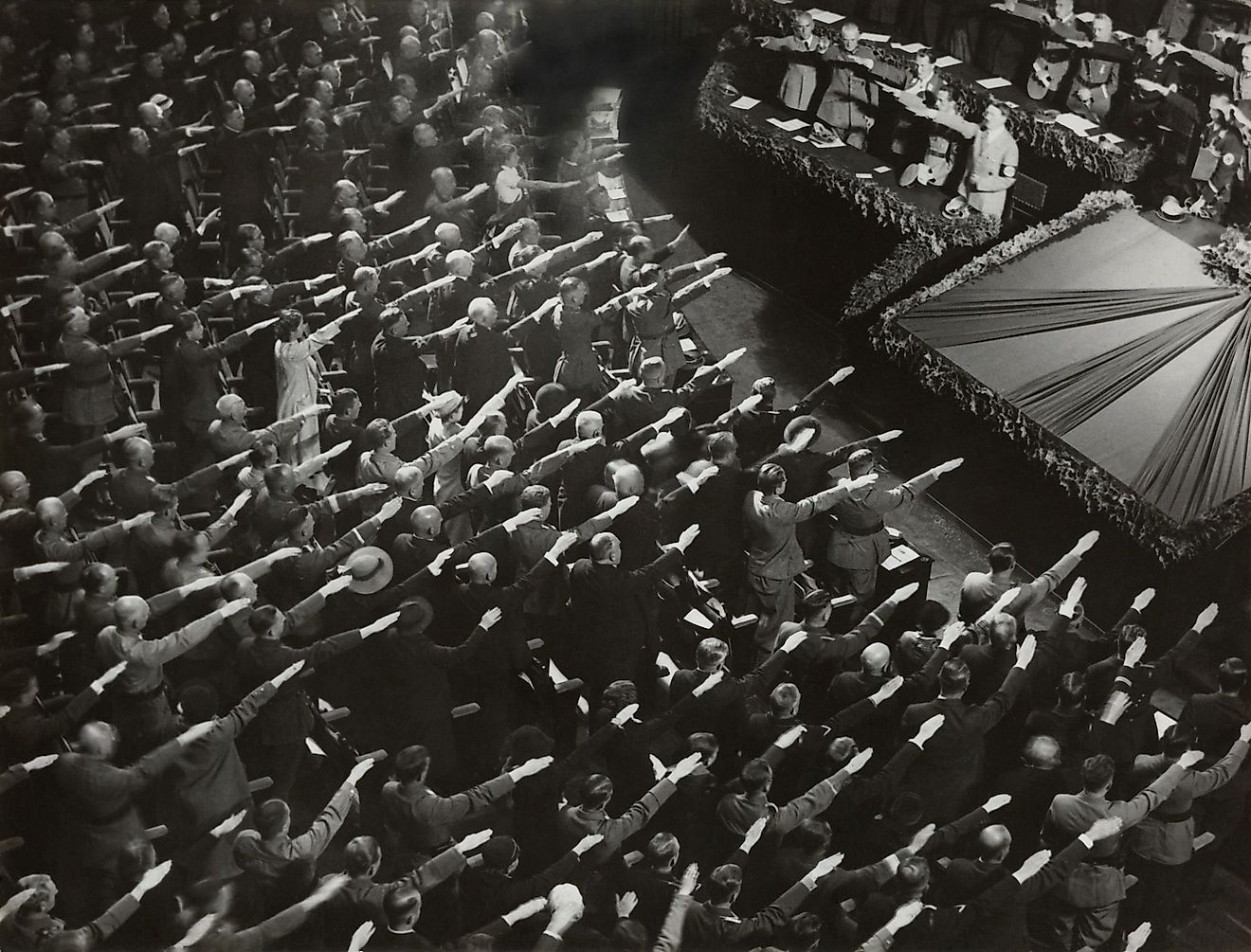What Is Authoritarian Government?

- An authoritarian government is a government that holds power and makes policies without the consent of the people that it rules.
- Authoritarian governments often use their power to suppress descent and exert control over the dissemination of information, including mass media.
- Authoritarianism is the oldest type of government in human history.
- Authoritarian governments can come to power through force of arms, as anointed successors to previous authoritarian regimes, or even through democratic means.
- Types of authoritarian governments include absolute monarchy, military dictatorship, and ideologically-based regimes.
An authoritarian government is a government that is not chosen by the people and has absolute power to govern as it pleases, without consulting the people that they rule. It can be a government in which one person acts as the absolute ruler (totalitarianism), or a government made up of a certain group of people, such as a political party. For almost as long as humanity has existed, authoritarian forms of government have existed.
Authoritarian governments are normally characterized by the suppression of dissent and control of the dissemination of information. Any type of media is heavily censored. In many cases, the media is used as a tool of an authoritarian government in order to make it and its policies seem more popular in the eyes of the general population.

Authoritarian governments can come about in several ways. Oftentimes, they emerge by force of arms. In other cases, popular uprisings can ironically lead to the rise of authoritarian regimes. Sometimes, an authoritarian government can come about through democratic means, when a certain leader or party gets elected, then gradually centralizes power to the point where there is little to no opposition to their rule. In some instances, a person becomes an authoritarian ruler by being the anointed successor of a previous authoritarian ruler.
There are also different types of authoritarian governments, including absolute monarchies, military dictatorships, and ideological, one-party regimes.
How Do Authoritarian Governments Gain Power?

Force Of Arms: One way authoritarian governments come to power is through force of arms, such as when a country’s armed forces overthrows a civilian-led government. This type of power grab occurred in the country of Burma in February 2021, when the military arrested senior leaders of the party poised to win national elections and replaced the civilian-led government with a military regime led by the person in charge of the country’s army. In other cases, an authoritarian government can rise to power following an armed conflict. This is how communists came to rule China, after they defeated their nationalist foes in a civil war that ended in 1949.

Popular Uprising: An authoritarian government can also come to power by means of popular uprising. This occurs when masses of people demonstrate and engage in campaigns of civil disobedience in protest of the current government, ultimately bringing to power a new government that takes advantage of its newfound power to seize control of the state and suppress opposition to its rule. An example of this is the 1979 Islamic Revolution in Iran. It began as a popular uprising that ultimately led to the Iranian monarch and ruler, known as the Shah, fleeing the country. In his absence, a new regime led by a religious leader named Ayatollah Khomeini seized power. In a short time, the new Iranian government became an Islamic fundamentalist dictatorship that imposed religion-based laws on its people and violently suppressed opposition to its rule.

Succession: In some cases, the transfer of power from one authoritarian ruler to another can take place peacefully, when the current ruler chooses someone to succeed them. This has been the case over millennia, as absolute monarchs, upon death, transfer power to their offspring, other members of their family, or whoever else they choose to succeed them. In 2015, for example, the King of Saudi Arabia’s absolute monarchy, King Abdullah, passed away and was succeeded by his younger brother, King Salman. When King Salman dies, he will likely be replaced by the Crown Prince, Muhammed Bin Salman. Note, however, that an authoritarian regime does not need to be an absolute monarchy for this kind of succession to happen. North Korea, for instance, is not an absolute monarchy, but a one-party, communist dictatorship in which Kim Jong Un succeeded his father, Kim Jong Il, after the latter’s death.

Democratic Means: An authoritarian government can even come to power democratically. One of the most infamous authoritarian leaders in history, Adolf Hitler, came to power following democratic elections. In just a few years, however, he and his Nazi Party centralized power and crushed their opponents so that eventually, Hitler was the absolute ruler of Germany.
Types Of Authoritarian Government

There are different types of authoritarian governments. One type is an absolute monarchy, in which a hereditary ruler governs with absolute power. Although this type of authoritarian government is largely confined to the past, there are still some in existence, such as Saudi Arabia and Eswatini (Swaziland). Another type is a military regime in which the armed forces of the country control the government. The aforementioned military regime in Burma is an example of this. Some authoritarian governments are ideologically-based, such as the previously mentioned government of the Islamic Republic of Iran. Other prime examples of ideologically-based states are the former Soviet Union and the People’s Republic of China. All authoritarian governments, however, share one thing in common. None of them exist because the people that they rule want them to be there.











